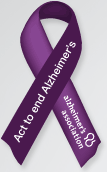Well here we are in late 2011. One of the things that is astounding to me is the disconnect between the research experts and those in the daily grind. If you are the caretaker of a loved one or live with someone with AD you are the real expert in my opinion.
So we have no cure, we have no definitive way to treat it and we have no definitive way to diagnose it with 100% certainty except brain biopsy or autopsy of brain. I need to re notify and present those grave and awful facts to give an understanding and perspective of where things are at and break it down for the general public, so we can understand exactly where the current efforts to combat the disease are at. I suppose a lot of websites and organizations try to do that, but it is not always easy to follow what the heck is going on with AD.
The hottest research, at least what is put out to the media outlets, and available to you and me is in diagnosis. In terms of treatment or cure, one of the things you have to understand is that a lot of the medicines and treatments and funding for studies comes from the private sector IE. big old pharmaceutical companies. I think you know as well as I do that drug companies are considered sinister, evil and only concerned about the bottom line. Everyone likes there funding though. But with the Obamacare crisis- the acceptance and positive regard for drug companies is probably at an all time low. That actually hurts research efforts for things like Alzheimer's disease. -(swear to God)
In Duluth, MN- a city and state that arguably, collectively loves to hate physicians as much as any place: I can barely even talk to drug reps anymore. I almost don't let them in my office. If a doctor around these parts does interact with a drug company representative, then his or her name may be smeared all over the local fish wrapper newspaper for being bad as a doctor and moreover as a human being and everyone believes it.
Who is going to pay for the research. Just dont' hear much about the plight of AD with the health care antics, do you?
So take it up with the publicly funded agencies like the NIMH and the NIH. Very politically correct since they are "PUBLIC". Publicly funded research is up there with the perceived unconditional altruism of the "non-profit" tax status entity. Whatever way you look at it, they are all politically correct right?
I am not going to even get into the funding for AD research relative to many other diseases, but lets just say by looking at the numbers, we can draw an easy conclusion that AD research may be underfunded in the public sector.
So the thought leaders: those in the Research trenches while liasoning up with the Alzheimer's Association, want to figure out a better way to diagnose AD other than a brain autopsy. We want to diagnose it early. Really really EARLY. Early diagnosis without question is good-clinically and humanely it is ALWAYS good. I will not consider the economic, bio-ethical and therefore political implications- the liberal weasels will talk care of that, and it won't be pretty for those whom care about the sanctity of human life- like myself and perhaps most readers of this blog.
Now let's think about the AD process. It is a two-fold process: internal and external.
There is something internally going on at the brain cellular level and also something externally going on with the victim- the behavior, the memory, the personality changes-you caregivers are the experts on the external manifestations of the disease. You live it everyday.
Now consider this-A person does not wake up one day and have Alzheimer's. We all know this and it is established that there are changes at the brain cellular level and gross physical biological changes to the brain. Amyloid and such- the battle cries and buzzwords we have all heard before. plaques and tangles amyloid and tau
It should not be a leap of faith to say that the internal changes to the brain start before the external changes. That's just how the brain and the disease works. Remember we have millions and millions of brain cells, and if you kill one cell nobody is going to notice too much. The disease has to destroy a lot of brain cells to notice externally, that can take years.
Researchers want to make the diagnosis early in the process, really early. Once again, what is happening internally to the brain and the cellular level in an AD victim may start years and years MAYBE even decades before the external change start when victim starts showing the signs of Alzheimer's all of you are so familiar with. If you get it early there might be something more we can do about it. Maybe some day at least stop it before it advances.This is a good thing. It is why we want to find it early, before the external manifestations start.
Now how do you do that. Basically we can look at pictures of the brain, through neuroimaging, CT MRI, PET SPECT all kinds of elaborate scans. We can tag certain cells to go to certain parts of the brain that might be showing changes in Amyloid composition per say. not new to medicine but in terms of radioactively tagging cells to look at the brain, it is not as common and established as say a scan of the heart using tagged cells.
So there is a big area-Advancing Neuroimaging, sophisticated picture of the live human brain and its real time functioning. in PET scans, one of the really expensive but promising radio tracers is called (PiB) which is short for:
Pittsburgh Compound B This can help trace and assess Neocortical amyloid Burden or how much amyloid is accumulating in the brain, with pretty good accuracy.
The second diagnostic tool we have is laboratory tests either blood or cerebrospinal fluid. Biomakers Biomakers and Biomarkers. BIOMARKERS.
So that's it. We have blood (and spinal fluid) and neuroimaigng to work with, and that's about it. Not too much else these days. Those are the main things we have to work with in terms of diagnosing that disease when it is still internal and otherwise invisible, years before it externally manifests itself. Yes of course we have genes to look at and work with, but we have been barking up that tree for a few decades now, and it really isn't totally panning out for everybody across the board as a gold standard to definitively make the diagnosis or rule it out in anyone and everyone. So take some of those better studied genetic markers like ApoE, (well discussed everywhere now) and lets clump them into blood work studies.
Now is there a way we can combine all the bloodwork and biomarkers and Amyloid Burden in the Brain by imaging? Is there???
Well it just so happens that the AIBL (Australian Imaging, Biomarkers and Lifestyle Study) is working on doing just that.
Basically they took 273 people , performed the expensive PiB-PET scans and then also took bloodwork from them. Studying the blood they used 9 different biomarkers in a panel, thing like cortisol and ApoE were tested in the blood panel. They figured out the biomarkers that would correlate with the different amounts of amyloid burden in the brain that would predict and be consistent with developing AD. Basically not an easy thing to do.
Then they took another 817 people or so and didn't do a scan. They clumped these people into clinical diagnosis: AD (external Alzheimer's); MCI (mild cognitive impairment); healthy individuals.
!00% of the Alzheimer's victims had a high neocortical burden based on the blood panel with the 9 biomarkers, (remember the panel correlated with the neuroimaging originally that showed the brain amyloid.
Okay so what does it all mean?
Basically it is moving us a little closed to developing a blood test to allow us to diagnose AD much earlier before it externally manifests. No we are not there yet.
The idea is neuroimaigng is too expensive, getting a spinal tap is too invasive , and we need a good blood test that will work for everyone to make the diagnosis before the disease outwardly manifests.
Remember all the research is happening around the world not only America. As I said in previous posts, it is collaborative and competitive. Everyone wants to be the first to make that discovery. No one openly admits it. That just would not be altruistic. '
So that's where the efforts are. If we can get it diagnosed early, have a mainstream blood test that you can get at the primary care clinic, then perhaps we can find more effective treatments earlier on inn the disease process. . If we don't have meaningful treatments, but we can diagnosis it really years earlier... well the way American society it acting, We will be in really big trouble.
Subscribe to:
Post Comments (Atom)


















3 comments:
Doc,
i love you and follow your blog, but you are really wordly. Say Hi to the Mrs. for me.
God Bless,
joe
My healthy Mother died @ 88 after many yrs. With AD. Last year, my 47yr dghtr. Developed Aggressive MS. There are similarities. Have there been any combined studies of these 2 disease?
Sincerely, Carla Cashion
Good question,
Not a lot of research looking at the comorbid of MS and AD.
MS is white matter and AD is gray matter, seems like the experts in the two areas be it research or clincal care, don't connect enough, in the end they are both devastating neurological diseases, with lots of psychological ppain for the sufferer and the loved ones.
A lot of the behaviors can have crossover similarities, and perosnality changes, a lot mor emeds are available to treat MS, with lots of potential side effects and behavioral and cognitive. MS typically affects younger, people and AD more commonly older.
I'm sorry for what you are going through, it seems like these things often all strike at one time.
Post a Comment